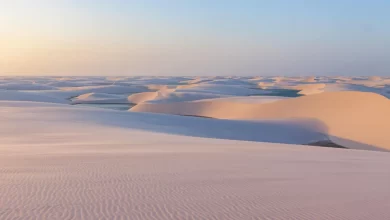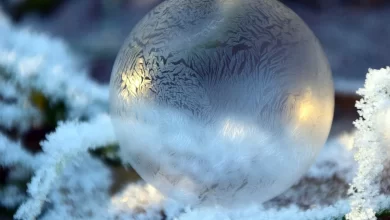Cloud formations have long been observed by humans, dating back by many centuries.Clouds have always piqued people’s interest. They had always wondered why some clouds were dark and others were white and fluffy, and why some clouds were so high up and others were so low that they appeared to be reachable by human hands. Clouds is one of the things that made our green planet earth habitable.
- A cloud is a mass of water drops or ice crystals suspended in the atmosphere. Clouds form when water condenses in the sky.
- Three main ingredients that are needed for clouds to form are: moisture, condensation, and temperature
- Nephrology is the study of clouds and is part of the cloud physics branch of meteorology.
- Clouds can travel at speeds ranging from 30 to 120 miles per hour (48 Km/h to 194 km/h). The speed is determined by the situation and the type of cloud. For example, during the jet stream, high cirrus clouds can travel at speeds of more than 100 mph (160 km/h). During a thunderstorm, clouds can travel at speeds of up to 40 miles per hour (65 Km/h).
- Clouds are mainly of three types-:
(I) Cumulus Cloud
These types of clouds have flat bases and are frequently described as “puffy,” “cotton-like,” or “fluffy” in appearance. Their name comes from the Latin cumulus-, which means heap or pile.
(II) Stratus Clouds
These clouds are low-level clouds with horizontal layering and a uniform base, as opposed to convective or cumuliform clouds formed by rising thermals. The term stratus is derived from the Latin prefix strato-, which means “layer.” Stratus clouds may cause a drizzle or a dusting of snow.
(III) Cirrus Clouds
These types of clouds are high-altitude clouds that are short, detached, and hair-like. These delicate clouds are wispy, silky sheen, or resemble hair tufts. They are whiter than any other cloud in the sky during the day. They may take on the colours of the sunset as the Sun sets or rises. - A typical cloud has a volume of about 1km3 and a density of about 1.003kg per m3 – about 0.4% less than the surrounding air density, which is why they float. So, by doing the math, a typical cloud weighs somewhere around a million tonnes.
- A typical cumulus cloud Can weigh as much as 100 elephants.
- There was a highly classified project by the United States Army During the Vietnam War known as Operation Popeye. It was a Cloud Seeding Project carried out to extend the monsoon season over specific areas, To soften the roads and disrupt the North Vietnamese military. However, after this incident, United Nations Banned any kind of Weather Weaponization.
- There is a massive cloud of alcohol in space. It’s in the W3(OH) region, which is only about 6500 light-years away. Unfortunately, because it is methyl alcohol (also known as wood alcohol, though it is not derived from wood), it is not suitable for drinking.
- In a galaxy that is 12 billion light-years away, there is the most distant and most massive cloud of water ever Seen in the Universe. It weighs about 40 billion times the mass of Earth. This massive cloud of mist swaddles a type of actively feeding supermassive black hole known as a quasar.
- The largest cloud seeding system is in China. They do this by firing silver iodide rockets into the sky where rain is desired.
- Noctilucent clouds are made up of tiny crystals of water ice up to 100 nm in diameter and exist at altitudes ranging from 76 to 85 km (249,000 to 279,000 ft), higher than any other clouds in the Earth’s atmosphere.
- Scientists found the coldest cloud, just 1300 kilometres north-east of Australia‘s Cape York, on December 29, 2018. According to a new study, a severe thunderstorm cloud that formed over the Pacific Ocean had a temperature of -111 degrees Celsius
- A cloudburst is an unusually large amount of precipitation in a short period of time, sometimes accompanied by hail and thunder, that can cause flooding. The highest cloudburst in the recorded history of mankind happened in Mumbai, India, on July 26, 2005. On this day, over 57.00 inches (1,448 mm) of rainfall happened in just 10 hours.
- The temperature of the top of the cloud ranges from 150 to 340 K. The top cloud pressure is 1013 – 100 hPa. Cloud height is measured above sea level and ranges from 0 to 20 km. The cloud IR emissivity ranges from 0 to 1, and a global average is around 0.7.
- A billion cubic meters can be found in a one cubic kilometre cloud. After doing the calculations, we discover that a one cubic meter cloud contains 500 million grammes of water droplets. This equates to approximately 500 thousand kilogrammes or 1.1 million pounds.
- Although clouds can exist at a variety of altitudes, typical cloud cover has a base at about 4,000m and extends up to about 5,000m.
- According to one study based on nearly a decade of satellite data, clouds cover approximately 67 per cent of the Earth’s surface at any point in time.
- Clouds can do freeze at times. These clouds are composed of ice crystals. Because the weight and shape of a cloud droplet do not change much when it freezes, it remains in place and does not fall. A cloud is a mixture of air, water vapour, and droplets of water.
- Ever wondered why rain clouds are dark? As clouds are visible, tiny water droplets or ice crystals accumulate in the Earth’s atmosphere. When it’s about to rain, clouds darken because water vapour clumps together to form raindrops, resulting in larger spaces between drops of water. There is less light reflected. The rain cloud appears to be black or grey in colour.






